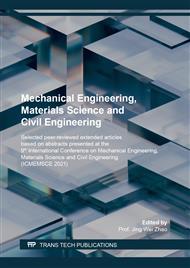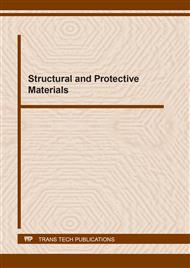p.159
p.173
p.185
p.191
p.197
p.203
p.209
p.215
p.221
The Structure and Properties of Quartz Pore Gradient Ceramic Materials
Abstract:
In view of the low performance of porous ceramics on the wall, the heavy task of saving clay resources, and the major problems of dredging the Yangtze River, this thesis uses low-grade quartz sand along the Yangtze River as the main raw material and kaolin as the plasticizer. Drying, sintering and other processes prepare high-performance porous quartz ceramics, and improve the performance of porous quartz ceramics by studying the control conditions and the control mechanism related to the performance of the sintered body. Quartz porous ceramic bodies were sintered at 1100 °C and 1200 °C, and no obvious gradient structure was found. However, the quartz porous ceramic bodies had obvious gradient structures after sintering at 1300°C. The quartz porous ceramic bodies were sintered. When the temperature is 1400 °C, the green body is not found to have a pore gradient structure. When the water-to-material ratio is 1.2 and 1.3, the quartz porous ceramic body has no obvious gradient structure; when the water-to-material ratio is 1.4, 1.5, the sample has an obvious gradient structure. Combining the cost performance between material performance and energy consumption, in order to obtain a better bonding point, porous silica ceramics should be prepared with a water-to-material ratio of 1.4 and a sintering temperature of 1300 °C to prepare porous silica ceramics with a better pore gradient structure. Its porosity is 32.45%, and its compressive strength is 5.23 MPa.
Info:
Periodical:
Pages:
215-220
Citation:
Online since:
April 2022
Authors:
Keywords:
Price:
Сopyright:
© 2022 Trans Tech Publications Ltd. All Rights Reserved
Share:
Citation:



